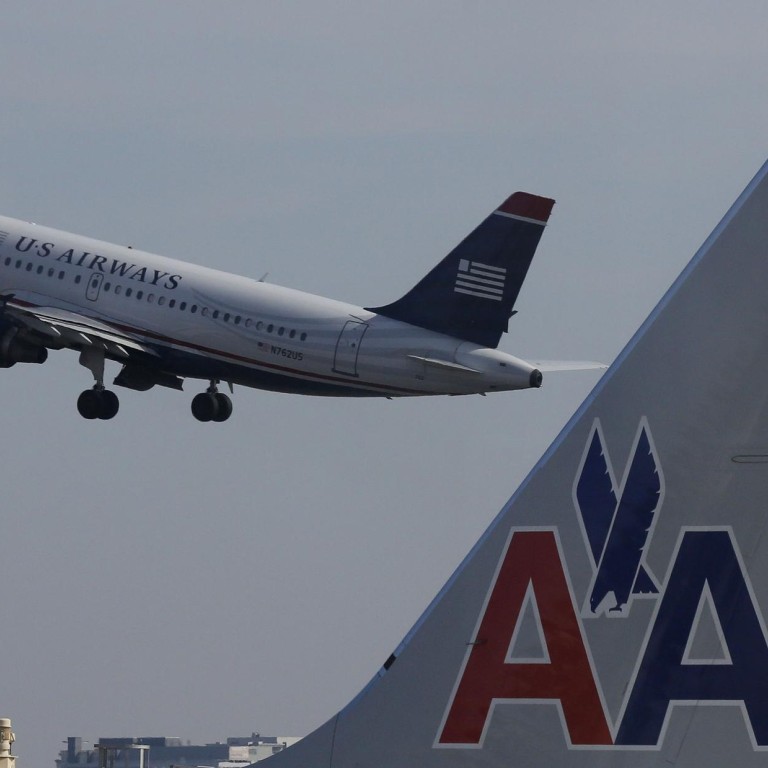
Why US passengers loathe airport productivity gains
Surveys may show them to be productive but the American system is still way behind Asia's best
Flying from Hong Kong to the United States recently, I occupied myself reading economist Tyler Cowen's book .
This is one of many recent works warning of rising inequality, but Cowen makes it clear the problem is not with the rich but with those who do not have the skills or smarts to compete in today's hi-tech economies.
He argues, for example, that the Americans who lost their jobs in the recession of 2009 were the least productive workers - and they may never be rehired, even in a full-blown recovery, because employers have learned to get by with fewer but better workers.
Many regulars to the US have at least one tale of a nasty run-in with some cranky flight attendant
But then, I landed in Chicago, where it would seem that a number of incompetent workers have escaped the 2009 purge, at least at O'Hare International.
Either that, or the "fewer but better workers" paradigm is going to be increasingly tough on the customer.
I felt particularly sorry for an utterly confused, stranded family of Indian passengers trying to locate an airline staffer to help them; perhaps they were hoping to take a vacation from their own country's famous chaos, only to arrive at an airport system that even US Vice-President Joseph Biden has described as "third world".
Two decades ago, when I moved to Hong Kong, the flights home to America were usually without incident. These days, there is always something.
With my arrival in Chicago last week, that something was an overheated, smoking bathroom fan in a flight tower, causing the evacuation of the tower's air traffic controllers - that is, it was incompetence.
Mid-air flights were diverted and hundreds of flights cancelled, with the consequential host of rebooking nightmares and lost luggage.
I listened to other passengers' horror stories as I waited for my connection, which I only made by ignoring an overwhelmed American Airlines employee who said my flight was cancelled and sent me to the back of an endless queue to rebook (the electronic departures board luckily told me otherwise).
The next day, as I waited for my luggage to arrive, I jumped on Google and learned something very interesting: US airports receive higher productivity ratings than those in Asia or Europe. Imagine that.
The reason? They process more passengers using fewer employees.
Yet passengers loathe US airports. In a recent survey of world airports by Skytrax, not one US facility cracked even the top 25 best airports, while half the top 10 were in Asia.
One reason is that Asia's airports are newer on average, so the infrastructure is better. They also process a higher percentage of foreign travellers, so are better at dealing with international flights.
It's not just the facilities, though.
Many regular flyers to the United States have at least one tale of a nasty run-in with some cranky flight attendant, usually described as an ancient, beak-nosed crone whose wide hips rendered the aisles impassable.
This compares with Asian airline staff, who are invariably slender, good-looking and youthful, just like they used to be in the West in the 1950s.
But have a little pity for those grumpy American flight attendants. They once had a certain degree of economic power; now they have very little.
They have been on the front lines of cost-cutting as the competitive landscape sharpened for US airlines, owing to everything from the deregulation of the industry that began in the late 1970s to the forces of globalisation and mechanisation.
Last year, American Airlines and Delta made a little more than US$400,000 revenue per employee. This is double the US$200,000 per employee revenue they got in 2004.
So investors can say: hey, this is a great story of efficiency improvement. Economists can say: this is the future; companies will do more and more with fewer employees, so get used to structurally high unemployment.
Customers, however, may sense a flaw in the system as they make their way through a US airport, desperately seeking a live body to help them with one problem or another.
On the ground, it often looks like US airports could use a few more workers, some of whom might manage to be at least marginally effective.
And it is on the ground, of course, where you'll often be when flying in the US.

